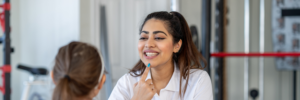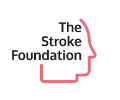A stroke is a life-altering event that can cause significant physical, cognitive, and emotional changes. One of the most challenging aspects of recovering from a stroke is adapting to life at home, especially if you are dealing with mobility and balance issues. Fortunately, home modifications can help you live more independently and safely after a stroke. In this article, we’ll discuss some of the most important home modifications you can make to support your recovery.
- Ramps and Handrails
If you’re dealing with mobility issues, you may find it challenging to navigate stairs or steps. Installing a ramp at your front entrance can make it much easier for you to enter and exit your home. You can also add handrails to your stairs, hallways, and bathrooms to provide additional support as you move around your home.
- Bathroom Modifications
The bathroom can be a dangerous place for stroke survivors. Wet floors, slick surfaces, and hard edges can increase the risk of falls and injuries. Consider adding grab bars near the toilet, shower, and bathtub to make it easier to stand up and sit down. Installing a shower bench or chair can also be helpful, especially if you have difficulty standing for long periods. A handheld showerhead can make it easier to reach all parts of your body, and an elevated toilet seat can make it easier to get on and off the toilet.
- Bedroom Modifications
After a stroke, you may need to adjust your sleeping arrangements. If you have difficulty getting in and out of bed, consider adding a bed rail or grab bar to provide extra support. You may also need to adjust the height of your bed or invest in a hospital bed that can be adjusted to different positions.
- Kitchen Modifications
Cooking and preparing meals can be challenging after a stroke, especially if you have weakness or paralysis on one side of your body. Consider installing pull-out shelves or drawers that make it easier to access items in your kitchen. You may also want to invest in a wheeled kitchen cart that you can move around your kitchen as needed. Adding a seated workspace or table can also make it easier to chop vegetables or prepare meals.
- Lighting and Flooring
Good lighting is essential for stroke survivors, especially those who have vision problems. Make sure your home is well-lit, with additional lighting in hallways, bathrooms, and other areas where you may need to move around at night. If you have difficulty seeing, consider installing motion-activated lights that turn on automatically when you enter a room.
Flooring is another important consideration. Hardwood or tile floors can be slippery and increase the risk of falls. Consider replacing slick surfaces with slip-resistant flooring, such as cork or rubber. You may also want to invest in a non-slip bath mat or shower mat to reduce the risk of falls in the bathroom.
Home modifications can make a significant difference in the quality of life for stroke survivors. By making a few changes to your home, you can increase your independence, reduce the risk of falls, and improve your overall safety and well-being. If you’re not sure where to start, consider speaking with an occupational therapist who can provide guidance and recommendations based on your specific needs.




